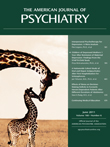Asenapine for the Treatment of Stuttering: An Analysis of Three Cases
To the Editor: Stuttering is a disturbance in the fluency and time patterning of speech that affects 1% of the total population (1) and may be related to excess dopamine activity (2). Dopamine antagonist antipsychotic medications have been shown to be beneficial for the treatment of stuttering (3); however, a major side effect of many agents in this class is metabolic syndrome with associated weight gain (4). Asena-pine is a new atypical antipsychotic associated with less weight gain than other atypical antipsychotic medications (5). We report three cases of adults with stuttering who responded well to asenapine with good tolerability.
Case Reports
“Mr. M” is a 20-year-old man with moderate stuttering. At a treatment dosage of 5 mg of asenapine per day, the patient had a 60% improvement in his fluency as assessed by the Clinical Global Impressions (CGI-I) improvement subscale (6). After 5 months, the patient gained approximately 10 lbs and experienced mild sedation, but otherwise he tolerated the medication well.
“Mr. D” is a 45-year-old man with moderate stuttering. At a treatment dosage of 5 mg of asenapine per day, he experienced a 60% improvement in speech (much improvement on the CGI-I). While taking the medication, the patient noted increased irritability and sedation. He experienced no weight gain or appetite increase.
“Mr. A” is a 19-year-old man with moderate stuttering since he was 3 years old. At a treatment dosage of 10 mg of asenapine per day, his fluency increased approximately 75% (much improvement on the CGI-I). The patient tolerated asenapine well.
Discussion
In each of these cases, 5–10 mg/day of asenapine was associated with improved fluency. The most common side effect was sedation. One patient reported a 10-lb weight increase, but the other two experienced none. All patients presented to our clinic for stuttering treatment, and no formal measures of fluency were taken. These case reports suggest that asena-pine may be an effective and well-tolerated medication for the treatment of stuttering. However, research using randomized placebo-controlled trials is warranted to further investigate asenapine in stuttering.
1. : Epidemiology of stuttering in the community across the entire life span. J Speech Lang Hear Res 2002; 45:1097–1105Crossref, Medline, Google Scholar
2. : A positron emission tomography [18F]deoxyglucose study of developmental stuttering. Neuroreport 1995; 6:501–505Crossref, Medline, Google Scholar
3. : Alleviating stuttering with pharmacological interventions. Expert Opin Pharmacother 2004; 5:1565–1571Crossref, Medline, Google Scholar
4. : Antipsychotic-induced weight gain: a comprehensive research synthesis. Am J Psychiatry 1999; 156:1686–1696Link, Google Scholar
5. : Long-term assessment of asenapine vs olanzapine in patients with schizophrenia or schizoaffective disorder. Pharmacopsychiatry 2010; 43:138–146Crossref, Medline, Google Scholar
6. Guy W (ed): ECDEU Assessment Manual for Psychopharmacology: Publication ADM 76-338. Washington, DC, US Department of Health, Education, and Welfare, 1976, pp 218–222Google Scholar



